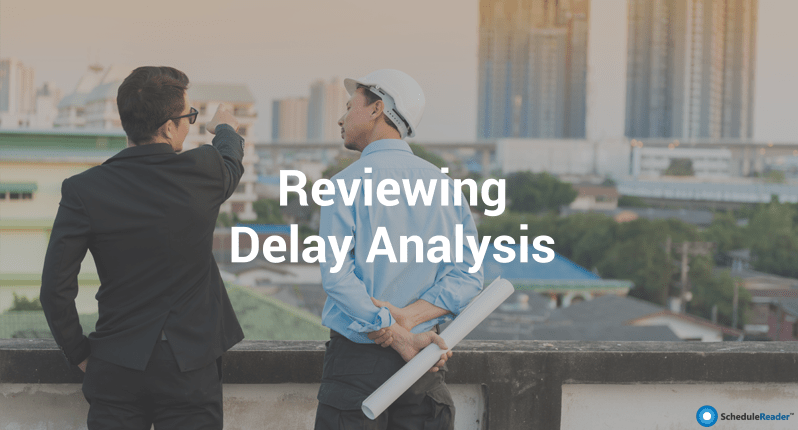You might think that Primavera P6 is used solely by Engineers and Schedulers during review of construction delay analysis.
Well, you might need to rethink that.
Let me elaborate.
In each and every construction project, there are always events that can cause multiple delays to the execution process which result in failing to achieve the designated project finish date and/or budget.
These events can occur in different situations and circumstances, as some of them are caused by the Client, some by the Consultant, some by the Contractor or Sub-contractors, and, even some are totally out of everyone’s control – events known by the name – “Force Majeure Events”.
However, all of these events cause one result – Delay – once a project has entered this phase, the contractor, who is required to finish the project on the contractually agreed finish date, starts a process called “Delay Analysis” using one of the techniques’ list agreed on in the official contract between them and the Client “Owner”.
The next step is for the contractor to submit an EOT “Extension of Time” to request from the owner to add an extra duration to the approved project total duration or to a certain internal finish milestone for a certain scope of work.
The delay analysis is conducted using Primavera P6, by entering the specific details of the event using the different types of activities available in the application. The activities are then linked up with each other using the proper type of relationships that best represent the real event and how it occurred. This results in a certain amount of time caused by the event which is now referred to as the “Event Impact”.
At this moment, the owner assesses the submitted EOT report and its impact and reviews it to determine if the contractor deserves a time extension or not. All of this should be done under the agreed contract clauses that describe the whole process and its conditions.
Usually, the contractor sends a “Notice for claim” letter to the owner whenever a delay event takes place to reserve their right at any time and cost impact resulted from the event. Most of the contracts say that the contractor must submit a delay analysis for the event within a certain period of time which usually varies from two weeks to two months.
Now let’s say that the owner received the EOT report and they didn’t approve of that delay analysis or its results; the owner then replies with his comments and his decision whether to reject the submittal or instruct the contractor to resubmit it after applying the comments. Either way, we will now assume that the owner rejected the whole delay analysis and decided that the contractor does not deserve any extension of time-based on the mentioned delay events.
At this point the contractor has two options:
- To accept the decision and proceed with a recovery plan to mitigate the extra time and try to minimize the effect of delay as much as possible;
- To request an arbitration.
As you have noticed and probably already speculated, we will go with option no.2 in this article.
Now the contractor wants a third party to interfere and decide between the two opposing parties because they think that they deserve a certain extension of time. The two parties start filtering the entities that are able to be their third requested party and to decide which one is going to be their arbitrator.

Now the long-awaited moment – the Attorneys – it is their time to interfere and decide which party is right in this conflict.
However, for the attorneys to be able to properly judge the case and make a decision, they need to review the contract’s condition and the delay analysis.
As we mentioned above, the delay analysis was executed using Primavera P6, and now the attorneys need to accurately assess the report.
Unfortunately, Primavera P6 is a program that requires an educational course and certificate for a person to be able to use it, not to mention that the attorneys only need to see how the activities are represented “description, durations, and dates” and how are they linked up with each other and to the original scope activities.
Fortunately, software such as ScheduleReader, which is a viewer used to view the (.XER) files quickly and without editing any information in them greatly helps in these situations.
In such situations, attorneys will be able to quickly, simply, and comfortably view the delay analysis in a way that benefits them and satisfies their needs.
Eventually, this approach saves a lot of time in the process of the judgment and also efficiently helps attorneys to make the right decision that is suitable for the specific case.
About the Author:
Ahmed Khaled Ayoub is a Senior Construction Projects Control Engineer with 7 years of experience, especially in Planning/Scheduling. Expert in P6 & MS Project with PRMG Certificate from the American University in Cairo.

